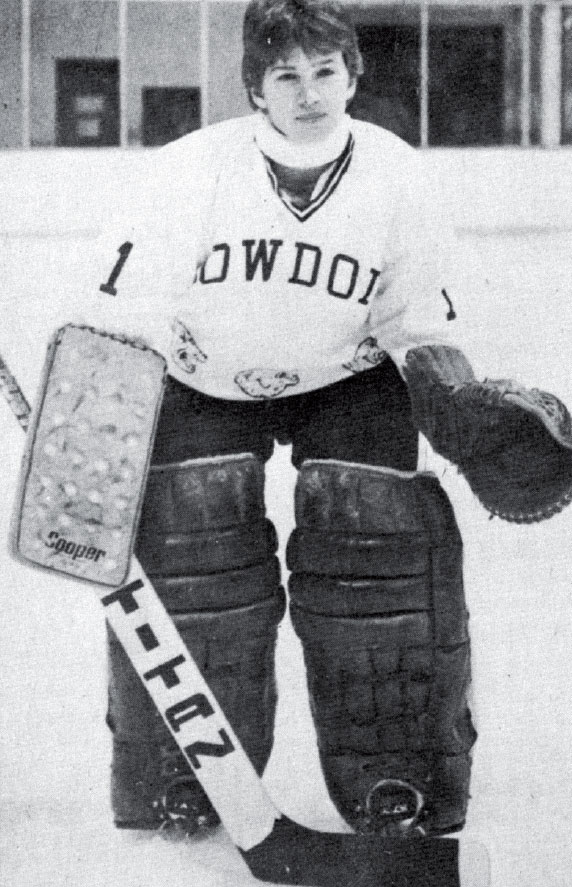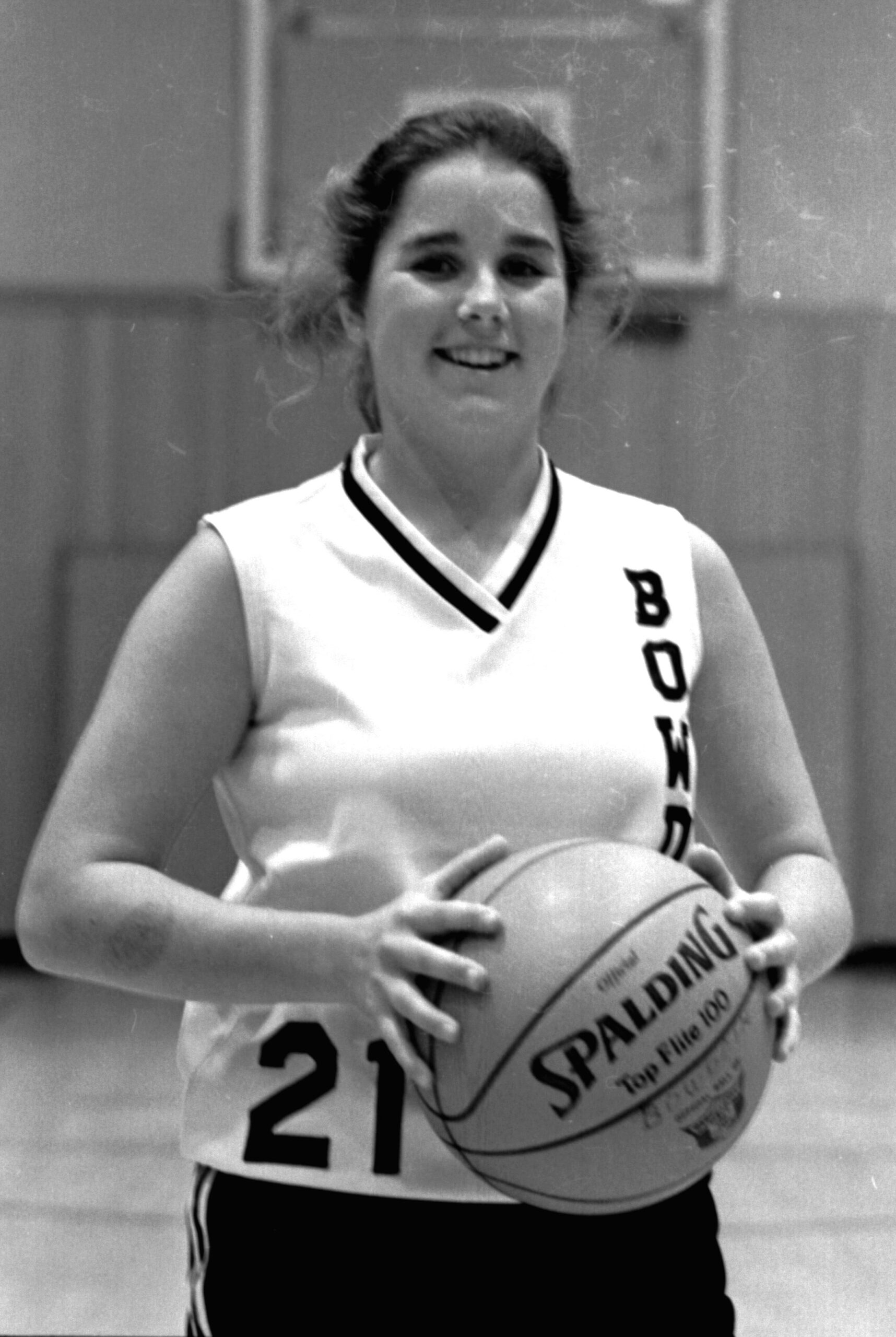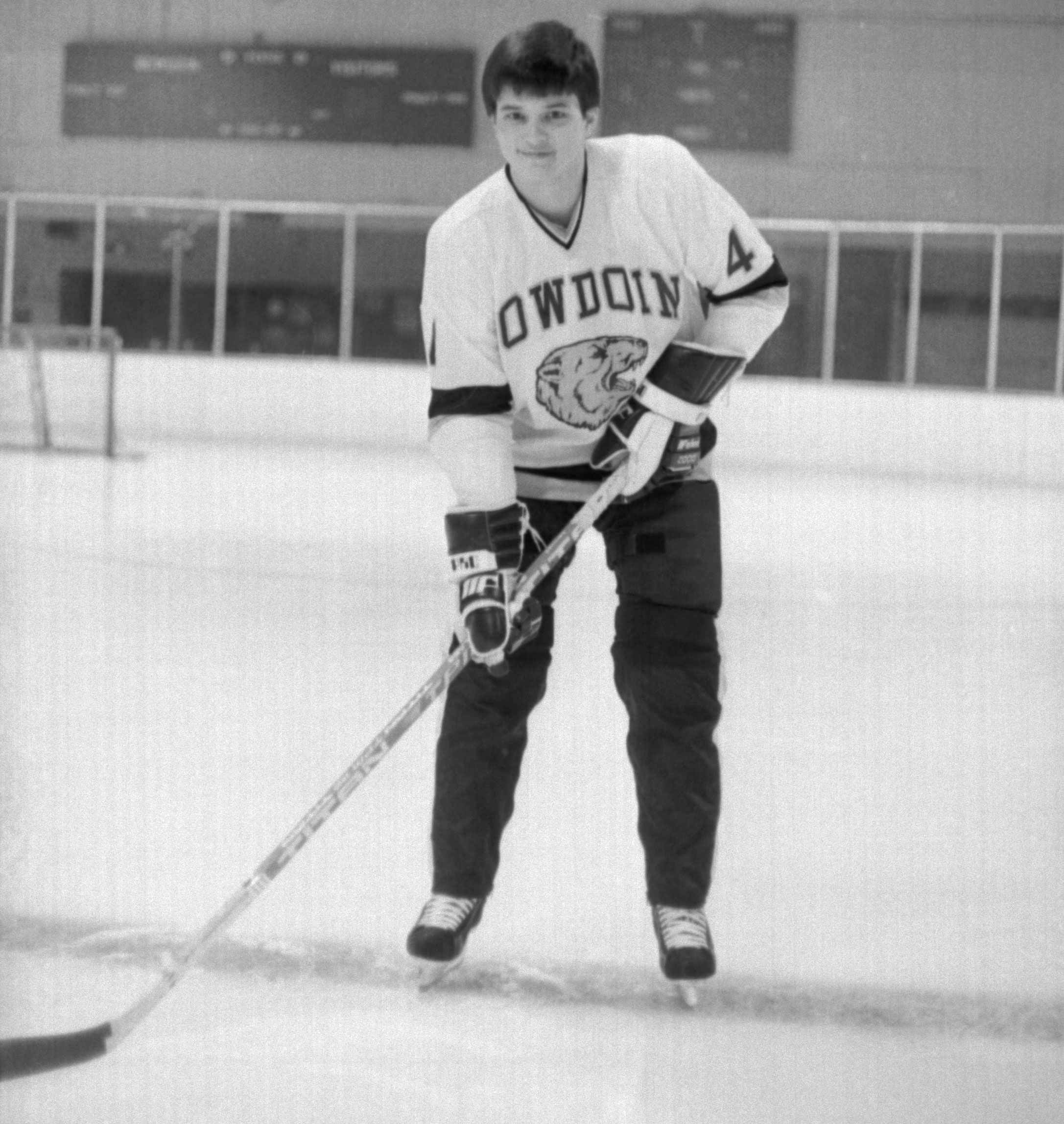Balancing men’s and women’s teams, athletics in the 1980s adapted to Title IX
March 10, 2021
 Courtesy of Bowdoin College
Courtesy of Bowdoin CollegeMore than a decade after Bowdoin began accepting women, women’s teams were still working to gain varsity status, playing time and a place in campus culture. In the beginning of the 1980s, women’s hockey was a club sport, although many players were eager for a higher status.
Susan Leonard Toll ’85, P’20 joined the club team when she arrived at Bowdoin and remembers her team frequently reminding Sid Watson, the director of athletic facilities and coach of the men’s hockey team, of their desire to be recognized as a varsity team.
“Every year, more and more women were attracted to hockey, and we would stop in with Sid Watson and say, ‘this isn’t going away, and there is this thing called Title IX,’” said Toll in a phone interview with the Orient. “We would say, ‘we don’t want to file a lawsuit, but we could.’ And so, each year he gave us a little more ice time, and a little more equipment.”
In 1984, women’s hockey finally achieved varsity status. Continuing to play her favorite position, goaltender, Toll was the first captain of the varsity team alongside Mary F. Willcox ’85.
“It was far from equal treatment to the men’s team at that point, but we finally had matching uniforms!” Toll said.
Toll was also captain of the women’s field hockey and lacrosse teams, achieving the All-American and a State of Maine All-Star in field hockey. Both women’s field hockey and women’s lacrosse became varsity teams in the 1970s, which Toll thinks was in many ways due to the number of women across the nation who were already playing these sports. She also partially attributes Bowdoin women’s hockey becoming a varsity team to the increase in national popularity of women’s hockey in the years prior.
 Courtesy of Bowdoin College
Courtesy of Bowdoin College
The March 1 1985 issue of the Orient reported on the women’s ice hockey team’s final match of their inaugural season against Boston College, writing that the game belonged to the two captains.
“Willcox ended her hockey career at Bowdoin impressively with three goals and one assist, while goalie and captain Leonard finished off a brilliant season with her third shutout, turning away 22 shots,” Richard O’Leary ’87 wrote for the Orient.
While some teams achieved varsity status due to Title IX in the 1980s, other varsity teams were discontinued. The men’s wrestling team and the men’s alpine ski team were both cut in the mid-1980s, as women’s wrestling and ski teams could not be fielded.
Emmett Lyne ’81 P ’21, ’23 was on the men’s wrestling team, as well as the football team. While he is glad that Title IX was instated and followed, he finds it unfortunate that the men’s teams had to cease at Bowdoin instead of finding equity alternatively.
“I wish we could figure out a way to add a women’s team,” Lyne said in a Zoom interview with the Orient. “Maybe it’ll come back.”
Over the decade, Bowdoin athletics as a whole balanced wins and losses. While many matches were against schools that Bowdoin currently plays during regular seasons, such as Colby or Amherst, many Bowdoin sports teams in the 1980s played schools the College no longer faces, such as Boston College, Harvard and Yale.
 Courtesy of Bowdoin College
Courtesy of Bowdoin CollegeThere was one particular team Bowdoin played in the 1980s in a match unlikely to occur ever again. The November 30 1984 issue of the Orient covered the men’s varsity basketball’s win against the Nicaraguan Junior National basketball team when they visited the College.
Something that has not changed since the 80s—although the current pandemic has temporarily altered it—is the role of athletics in campus culture. Both men’s and women’s matches gathered crowds made up of peers, parents and locals and provided opportunities for people to meet and socialize. While spectators were enthusiastic, no one took the games too seriously.
“It’s not that athletes were lionized or hero worshiped the way you may think of somebody a basketball player at a Big 10 school or football player at [the University of] Alabama,” Lyne said. “Bowdoin’s so small, you’re all in economics the next day together sweating it out.”
“We laughed a lot and we had fun,” said Toll. “We worked hard; there was no sense that any of us were going to go on to be professional athletes.”
With athletics being such a big part of social life on campus, the bonds forged on sports teams were strong, with many lasting to this day. Even now, in the days of social distancing, Bowdoin alumni who were teammates in the 1980s are finding ways to stay connected.
“This winter, during the COVID[-19] pandemic, a bunch of us have been getting together at 2:30pm on Saturdays and having zooms with our old trainer Mike Milinkovic, who’s in an assisted living facility and just turned 99 years old,” Lyne said. “We’ve got this group of friends and we’ve stuck with each other.”

Comments
Before submitting a comment, please review our comment policy. Some key points from the policy: